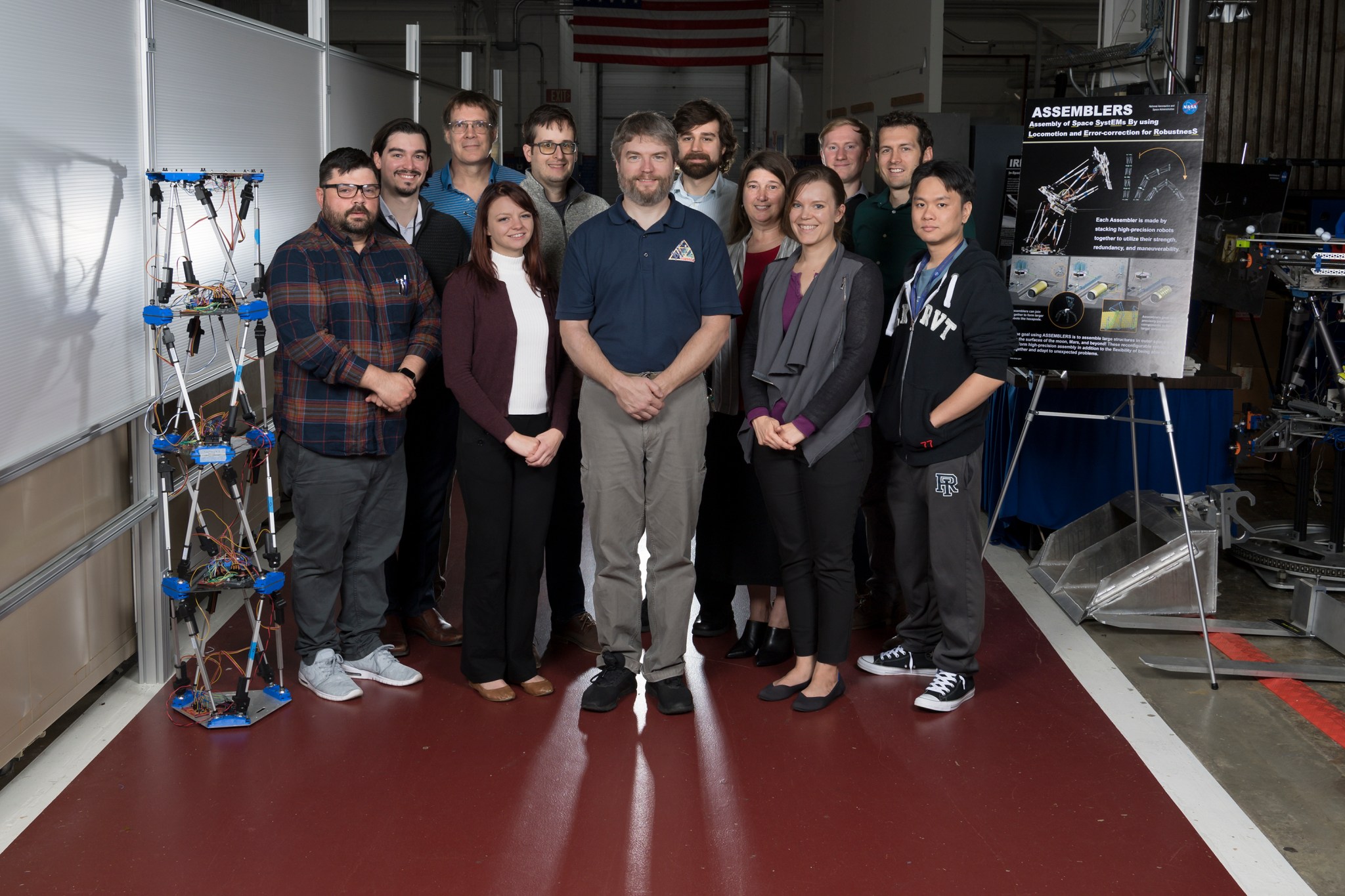Robots assembling a field of solar arrays on the surface of the Moon may seem like science fiction but it’s a vision a team of robotics researchers at NASA are working toward right now.
Currently, robotic systems are point-designed to be good for specific tasks and require non-recurring engineering costs. Modular robotics is a new paradigm can drastically reduce those costs. The Assemblers project, a recently awarded Early Career Initiative (ECI) proposal led out of NASA’s Langley Research Center, seeks to advance the technology, including hardware and software, that would allow autonomous in-space assembly, a critical technology for future human exploration and being able to live and work further on the Moon and Mars.
“The project goal is to increase the technology readiness level for the modular robot, autonomous in-space assembly, and develop a robotic prototype for ground testing,” said James Neilan, principal investigator.
The prototype will be a modular autonomous manipulation system that uses platforms that stack up to any size to allow multiple configurations to assemble components in space. It will use task management software to allow robots of various configurations and capabilities to work together. There’s also an error detection and configuration component that could be used during and after a build to identify and address any issues.
“The project goal is to increase the technology readiness level for the modular robot, autonomous in-space assembly, and develop a robotic prototype for ground testing.”
James Neilan, principal investigator
Using the example of a solar array farm on the lunar surface, current technology would be to use deployable assets. A reusable system like Assemblers would reduce risk and decrease mass because the system would be in place already and only materials would need to be sent to deploy something like solar arrays.
“It provides options,” Neilan added.
The Assemblers robots consist of stacked platforms that have actuators providing 6 degrees of freedom of movement between two bases and sensors that provide feedback on where components are located. The team is working on algorithms for software so that the robots could choose how many platforms to stack and the right tool for the task at hand. It would also calculate trajectories so routes are deconflicted and it could identify and correct any errors during the build process.
“Think of it like a construction site manager here on Earth. That person manages the materials and the people doing the work. We’re looking at software to do that with robots and tools,” said Iok Wong, lead for robotic architecture and integration.
Task management and error detection software can be used on Earth as well – not just for space-based applications. One potential application is agriculture – picking produce robotically is delicate work that could be refined through advances in machine learning. Another example is using robots to explore new environments before sending humans – on Earth or elsewhere.
The team is working with several partners, including Virginia Tech and Honeybee Robotics. They will be adding interns to their team and are working with subject-matter experts who have previously developed hardware and software that can be incorporated into Assemblers.
The ECI award provides $2.5 million over two years to allow the team to bring together a cohesive system from the pieces that have been incubated over time, fill in the missing pieces and mature the technology. It also allows early-career employees to get management experience using an “agile” system, helping transform the way NASA manages projects to allow work to happen in “sprints” with regular small check-ins instead of larger reviews.
NASA continues to enable promising technologists by selecting proposals for the ECI. The ECI projects are stand-alone, hands-on efforts from small teams led by, and mostly composed of, employees early in their NASA careers. These teams develop transformative technologies for high-priority challenges facing the agency as it goes forward with the next step in human exploration – the Artemis Program, which will enable sustainable exploration of the Moon and lead to human exploration of Mars. Funding is provided by NASA’s Space Technology Mission Directorate.
Kristyn Damadeo
NASA Langley Research Center






























